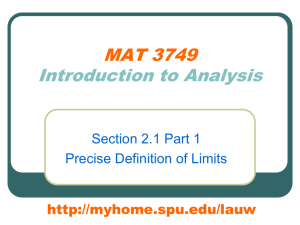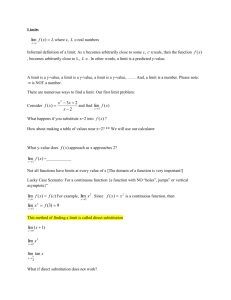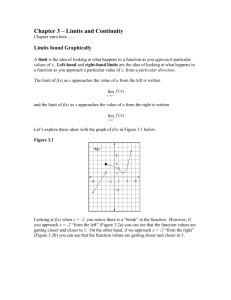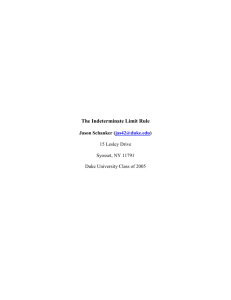Calculus 1 Lecture Notes
advertisement
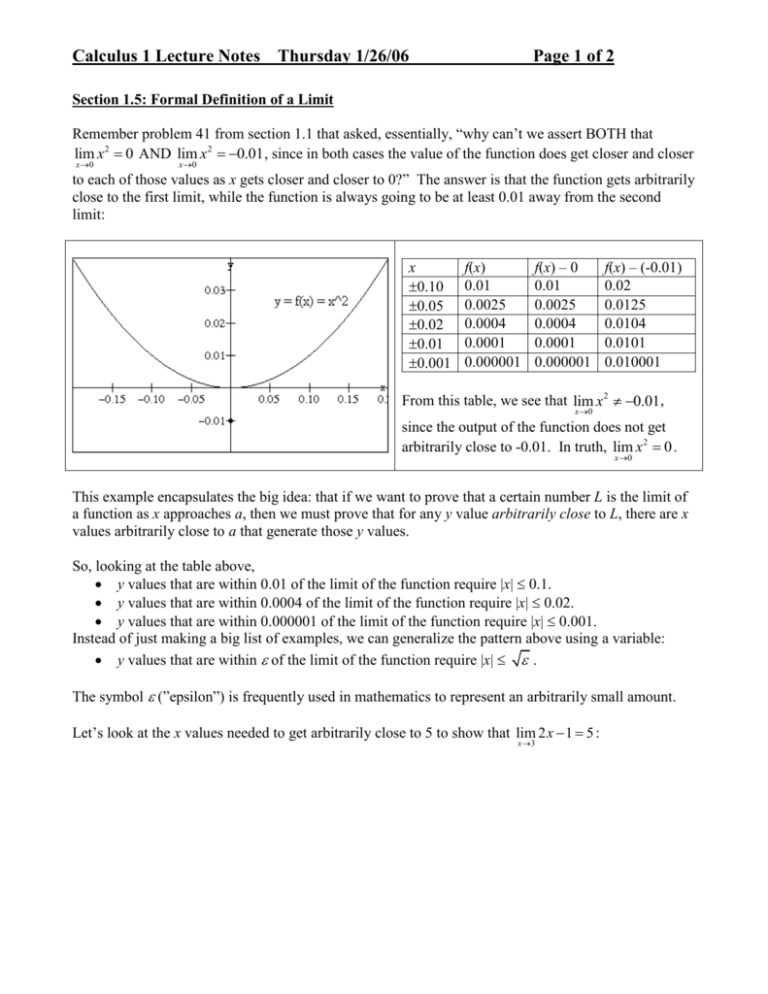
Calculus 1 Lecture Notes Thursday 1/26/06 Page 1 of 2 Section 1.5: Formal Definition of a Limit Remember problem 41 from section 1.1 that asked, essentially, “why can’t we assert BOTH that lim x 2 0 AND lim x 2 0.01 , since in both cases the value of the function does get closer and closer x 0 x 0 to each of those values as x gets closer and closer to 0?” The answer is that the function gets arbitrarily close to the first limit, while the function is always going to be at least 0.01 away from the second limit: x 0.10 0.05 0.02 0.01 0.001 f(x) 0.01 0.0025 0.0004 0.0001 0.000001 f(x) – 0 0.01 0.0025 0.0004 0.0001 0.000001 f(x) – (-0.01) 0.02 0.0125 0.0104 0.0101 0.010001 From this table, we see that lim x 2 0.01, x 0 since the output of the function does not get arbitrarily close to -0.01. In truth, lim x 2 0 . x 0 This example encapsulates the big idea: that if we want to prove that a certain number L is the limit of a function as x approaches a, then we must prove that for any y value arbitrarily close to L, there are x values arbitrarily close to a that generate those y values. So, looking at the table above, y values that are within 0.01 of the limit of the function require |x| 0.1. y values that are within 0.0004 of the limit of the function require |x| 0.02. y values that are within 0.000001 of the limit of the function require |x| 0.001. Instead of just making a big list of examples, we can generalize the pattern above using a variable: y values that are within of the limit of the function require |x| . The symbol (”epsilon”) is frequently used in mathematics to represent an arbitrarily small amount. Let’s look at the x values needed to get arbitrarily close to 5 to show that lim 2 x 1 5 : x 3 Calculus 1 Lecture Notes Thursday 1/26/06 Page 2 of 2 Now look at the x values needed to get arbitrarily close to 5 to show that lim x2 1 5 x 2 Precise definition of a Limit For a function f defined in some open interval a (but not necessarily at a itself), we say lim f x L , x a if given any number > 0, there is another number > 0 such that 0 < |x – a| < guarantees that |f(x) L| < . To prove a limit lim f x L : x a 1. start with f x L ; substitute the actual function definition in for f. 2. “massage” the inequality until it reduces to |x – a| < some expression involving . 3. the expression involving is your . Another way: 1. Solve the following inequality for delta: |f(a ) - L| <





